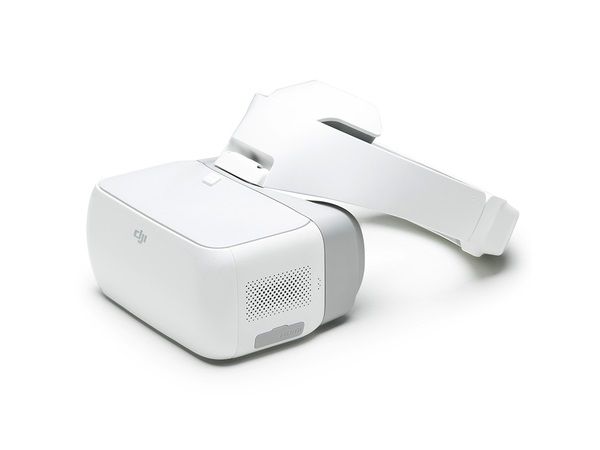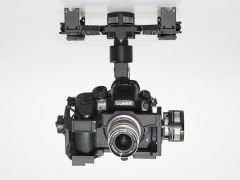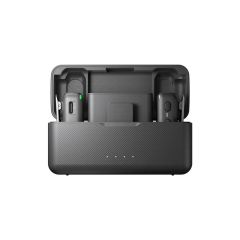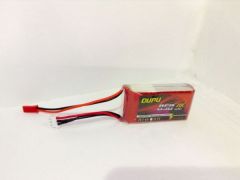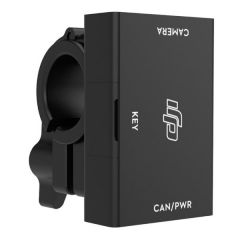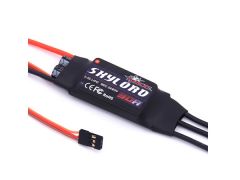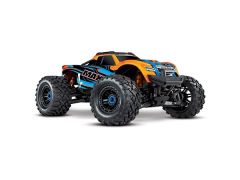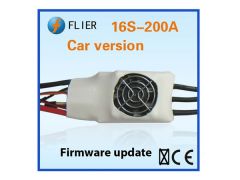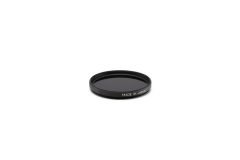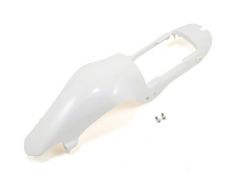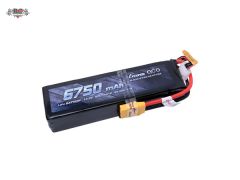DJI GOGGLES
The DJI Goggles are comfortable goggles designed for seamless FPV flying with DJI products. [1] They combine a pair of large ultra-high quality screens, long-range, low lag wireless connectivity, and direct control of photo and video capture. With Intelligent Flight Modes like ActiveTrack, TapFly, Terrain Follow, Cinematic Mode and Tripod mode, a totally new flying dimension is created.
NOW AVAILABLE!
Today we are pleased to announce the first DJI FPV glasses-DJI Goggles. With a pair of ultra-high quality screens, low lag wireless OcuSync transmission system, optical design, combined with Intelligent Flight Modes, you can enjoy the fun of immersive flying with friends by giving them a bird’s eye view of the world as you fly.

DJI Goggles - See a Different World
The DJI Goggles are comfortable goggles designed for seamless FPV flying with DJI products. [1] They combine a pair of large ultra-high quality screens, long-range, low lag wireless connectivity, and direct control of photo and video capture. With Intelligent Flight Modes like ActiveTrack, TapFly, Terrain Follow, Cinematic Mode and Tripod mode, a totally new flying dimension is created.
Key Features
|
Low Lag Transmission

High-Quality Optics
No Latticing: Each screen packs its pixels together tightly so you see a clean, cohesive image with no latticing. DJI Goggles can be used non-stop for a maximum of six hours.
High Resolution: Typical “2K” screens inside the goggles are split into two 1280x1440 sections, one for each eye. When viewing a 16:9 image, some sections are further cut off, leaving only a quarter of the available pixels. DJI Goggles have two 1920x1080 screens providing more than twice the amount of pixels of a typical 2K single screen
Optical Design: DJI Goggles use a beam splitter to display an image in front of each eye, as well as polarization to prevent any image overlap. This allows it to create genuine Full HD 1920x1080 resolution per eye. When used with the large aperture aspheric lens, an 85° field of view per eye is created for maximum immersion.
Head Tracking [1]
Your head movements control both aircraft yaw and camera tilt in Head Tracking Flight mode as with remote controller sticks. All you need to do is turn left or right to yaw left or right, and straighten your head to stop turning. In Head Tracking Gimbal mode only the gimbal will move without affecting yaw.
Touchpad & Remote Controller [1]
Access to key intelligent features through a touchpad integrated into the DJI Goggles or 5D button on the Mavic Pro controller makes navigating the internal menu system easy and intuitive.

Intelligent Flight [1]
Comfortable and Flexible
A unique solid headband design balances and spreads the weight of DJI Goggles around the head evenly, minimizing pressure on the face and keeping them comfortable to wear for hours. People who wear glasses are also able to wear them comfortably. The screen portion of DJI Goggles can be flipped up to glimpse the real world, or detached entirely for easy storage and portability.

Connect Your Devices
A range of built-in interfaces allows DJI Goggles to work with a wide range of devices.
Micro USB Input
Connect compatible Phantom 4 series and Inspire 2 using the USB port to get access to tracking functions and head tracking. [1] It is also used for firmware upgrades.
HDMI Input
Watch camera feeds from a Phantom 4 series or Inspire drones, or plug in a video device to watch films or play games. [1]
Micro SD Card
Download files from the aircraft to the goggle’s onboard SD card for a backup, or view video files you have captured[6].
Audio
Plug headphones into the headphone jack or use the onboard speakers to listen to audio on videos being played through the HDMI cable.
[1] DJI Goggles supports Mavic Pro, Phantom 4 series and Inspire series. Some functions will be adapted for different DJI Products.
[2] HD mode: 1080p/30fps: near-field with no interference; 720p/30fps: at long range or with interference; Smooth Mode: 720p/60fps
[3] Using the Mavic Pro, stream wirelessly at 720p/60fps and record video at 720p/120fps
[4] For Mavic Pro with two pairs of DJI Goggles and two RCs only
[5] The use of a spotter is essential when wearing DJI Goggles. The aircraft should not fly beyond the spotter’s line of sight.
[6] DJI Goggles can only play content downloaded from DJI drones.
Specification
|
Weight |
Goggles: 495 g Headband: 500 g |
|
Dimensions |
Goggles: 195×155×110 mm Headband(Folded): 255×205×92 mm |
|
FOV |
85° (single screen) |
|
Screen Size |
5 inch×2 |
|
Interpupillary Distance Range |
58 – 70 mm |
|
Refresh rate |
60 Hz |
|
Screen Resolution |
3840×1080 (single screen: 1920×1080) |
|
Operating Frequency |
2.4 GHz |
|
Max. Transmission Distance |
Same as the aircraft connected |
|
Video Downlink Resolution |
1080p30, 720p60, 720p30 |
|
Video Downlink Latency at least (Near field and free of interference) |
110 ms (Mavic Pro, 720p60, video format: 720p120) 150 ms (Phantom 4 series, 720p60, video format: 720p60/720p120) 140 ms (Inspire 2+X5S, 720p60, video format: 1080p120) 190 ms (Inspire 2+X4S, 720p60, video format: 1080p60) |
|
Battery Capacity |
9440 mAh |
|
Battery Energy |
35.44 Wh |
|
Max Operating Time |
6 hrs |
|
Operating Temperature Range |
32°F (0°C) - 104°F (40°C) |
|
I/O Interface |
Micro USB, 3.5mm audio jack, HDMI type-D, Micro SD card slot |
|
HDMI Supported |
HDMI 1.4b, HDCP 1.4 |
|
Sensors |
Gyroscope, Accelerometer, Proximity sensor |
|
Charger |
Input: 100-240VAC, 50/60 Hz. 0.5A Output: 5V,3A ; 9V,2A;12V,1.5A |
| Manufacturer | dji |
|---|

